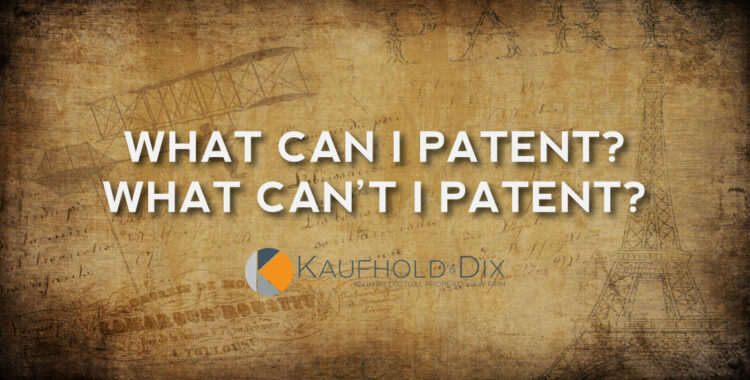What Can I Patent? What Can’t I Patent?
Patents can first be broken into patent types. Design patents and utility patents are the most common. Plant patents are also available.
Design Patent
Generally, a design patent protects the ornamental features of an invention, i.e. what it looks like. For example, you can get a design patent on a new lampshade as long as it looks different from other lampshades. Design patents can be used effectively to prevent direct knock offs of inventions as well as protect a portion of an invention, such as a bumper of a vehicle.
Utility Patent
Utility patents are used to protect processes/methods (a method of making a golf ball), apparatuses/machines (mechanical devices from hammers to rocket engines), and software/applications (though more limited).
Plant Patent
Plant patents are also available should you create a new plant sub-species – though this is a very specialized area of law.
WHAT CAN’T I PATENT
While the above includes most items you might be able to think of, there are limitations on what can be patented because either 1) they are protected by other types of intellectual property protection or 2) are not patent eligible for other reasons.
Examples Of Property Not Protectable By Patents
Examples of intellectual property which is protectable, just not by patents, include music, photographs, and artistic expressions, in general, which are covered by copyright law. Business names, logos, trade dress and the like are covered by trademark law. Finally, those processes, formulations, and other information ARE covered by trade secret law which you keep hidden from the world.
What about software?
Software is a tricky one, and the law is constantly changing in this area. The Patent Office will tell you that “abstract ideas” are not patentable and recently the courts have made defining an abstract idea more difficult. One test, until recently considered the main or definitive test, is called the machine or transformation test.
Is it a machine?
Does it include a machine?
Or is something being transformed by the process involved?
Often the Patent Office will argue that software is simply manipulating data – something that can be done mentally and mental processes are not patentable, so why should it be patentable if it is placed on a computer? Generally, attempting to patent software is an uphill battle unless it tied to some machine or process that is inventive as opposed to simply manipulative. It is an area of law where the inventor must make certain that the attorney has a high level of experience.
Important Note On Software and Apps
Generally, anything new and useful is patentable, but being “useful” is not enough. This is particularly true of software and even more specifically phone applications. Most of these are glorified spreadsheets presented in an easier to read or understand format. That is not an invention. That is not saying that no software or apps are inventions, but know that the USPTO is highly suspect when the only physical interface for your invention is a computer or a phone.
What about my perpetual motion machine?
Ideas which violate the laws of physics, are mental processes alone, include only mathematics or occur in nature (natural phenomena) are also not patentable. So, unfortunately, your world-saving idea of capturing unlimited power from nothingness might save the world, but it will not be patentable.
Don’t risk losing your intellectual property rights by failing to act.
Register for patent, trademark or copyright protection by calling Kaufhold & Dix at 612-216-1161.






